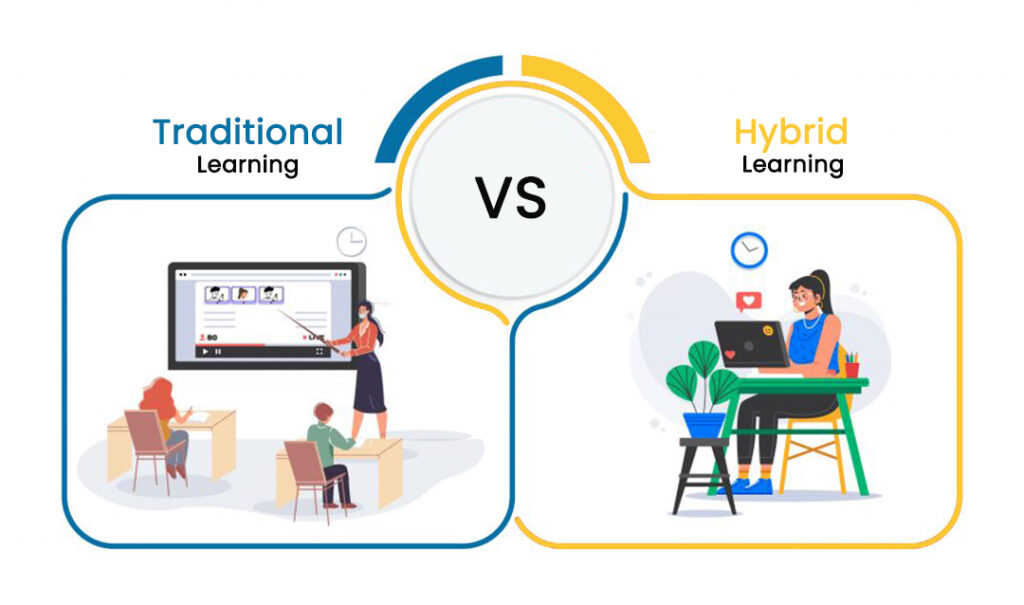Introduction
Education has always been the foundation of growth for individuals and societies. Over the years, the way we learn has changed dramatically. Today, two major forms of learning dominate the educational space, traditional classroom learning and online learning. While both aim to deliver knowledge and skills, they differ greatly in approach, structure, and experience. Let’s explore the strengths and weaknesses of both to better understand which one works best in today’s world.
In this article we will talk about tradition learning verses online learning, learn the difference between learning online teachings and tradition way of learning and find out which is more effective.
Strength And Weakness of Both
- The Learning Environment
In a traditional classroom, students gather physically in schools or institutions. Teachers stand at the front, engaging directly with learners. This face-to-face setup fosters instant feedback, group discussions, and teamwork. The physical presence often creates a stronger sense of community.
On the other hand, online learning takes place virtually. Students can log in from home, a café, or even while traveling. With platforms like Zoom, Google Classroom, and online learning portals, knowledge is just a click away. However, the lack of physical presence can sometimes make learning feel less personal.
- Flexibility and Convenience
One of the biggest advantages of online learning is flexibility. Learners can often set their own pace, re-watch lectures, and choose times that suit them best. This makes it ideal for working professionals, parents, or students balancing multiple commitments.
By contrast, traditional classroom learning runs on fixed schedules. Students must be present at a specific time and place. While this structure can feel restrictive, it also helps maintain consistency and routine, something many learners benefit from.
- Social Interaction
Human beings are social learners, and traditional classrooms provide plenty of opportunities for interaction. Group projects, extracurricular activities, and casual conversations help students develop social and communication skills.
With online learning, interaction is mostly virtual, through chats, forums, or video calls. While technology makes it possible to connect globally, some students may feel isolated or less engaged without the face-to-face human connection.
- Access to Resources
Traditional education often gives students access to libraries, laboratories, and physical materials. This is especially important for subjects that require hands-on practice like science experiments or arts.
Online education, however, removes geographical barriers. A student in Nigeria can take a course from a university in the United States without leaving home. With e-books, recorded lectures, and digital tools, resources are always available, though it requires a stable internet connection.
- Discipline and Motivation
The structured environment of a classroom helps many learners stay disciplined. Teachers guide the pace and monitor performance closely, ensuring students stay on track.
Online learning shifts the responsibility to the learner. Success depends heavily on self-discipline and time management. Without a teacher physically present, it’s easier to procrastinate or get distracted.
- Cost Considerations
Traditional learning is often more expensive. Beyond tuition, there are costs for transportation, uniforms, books, and sometimes accommodation.
Online learning tends to be more affordable. It cuts down costs for commuting and physical facilities. However, it does require investment in technology—like a good laptop, stable internet, and sometimes specific software.
Which Is More Effective?
Both methods have their strengths:
- Traditional learning works best for hands-on subjects, practical training, and learners who thrive on interaction.
- Online learning is highly effective for theory-based courses, independent learners, and those who value flexibility.
Increasingly, many institutions are blending both approaches into a hybrid model, combining the structure of classroom learning with the flexibility of online platforms. This model may well represent the future of education.
Conclusion
When it comes to traditional classroom learning vs. online learning, there’s no one-size-fits-all answer. The best choice depends on individual needs, goals, and circumstances. For some, the structured and social nature of a classroom is invaluable. For others, the flexibility and accessibility of online learning make it the perfect fit.
In truth, both forms of education are not competitors but complements. Together, they have the power to make learning more inclusive, flexible, and effective in our rapidly changing world.

